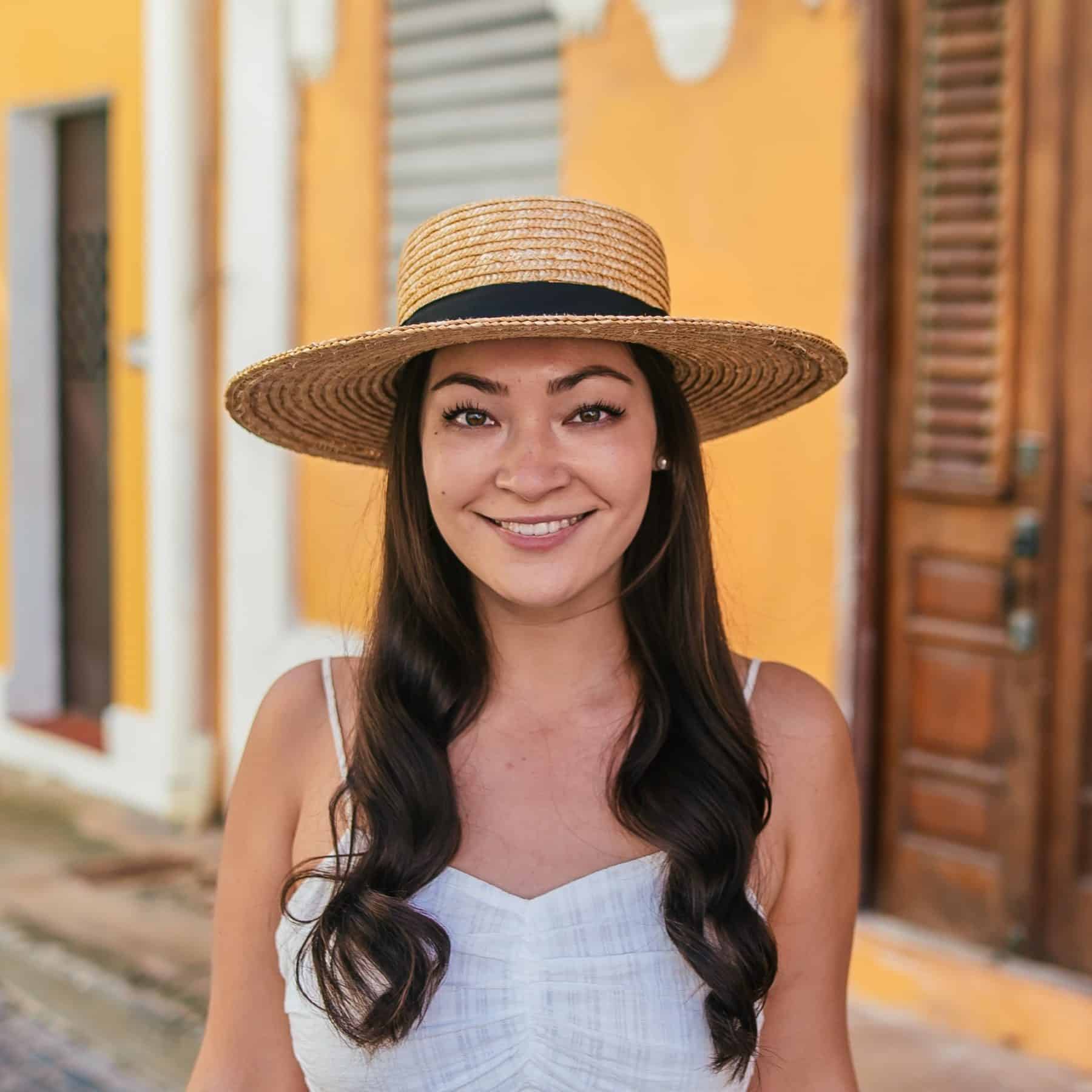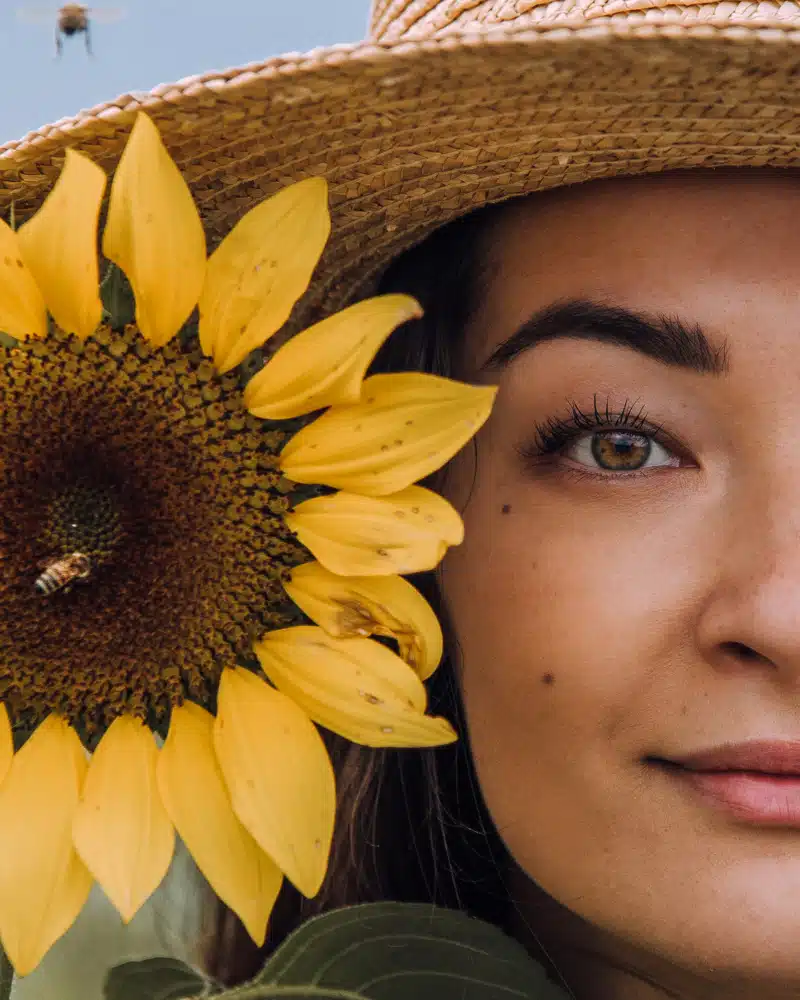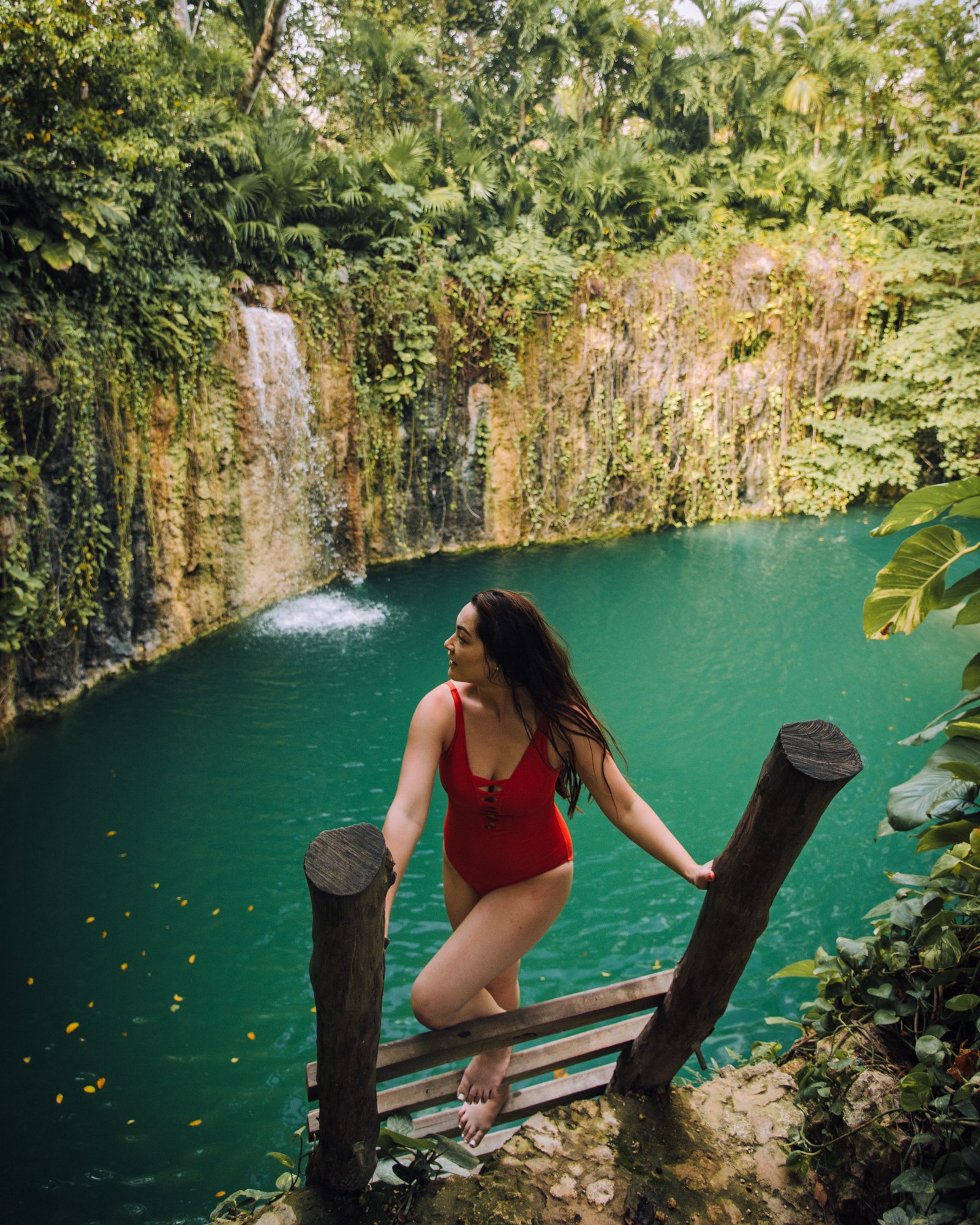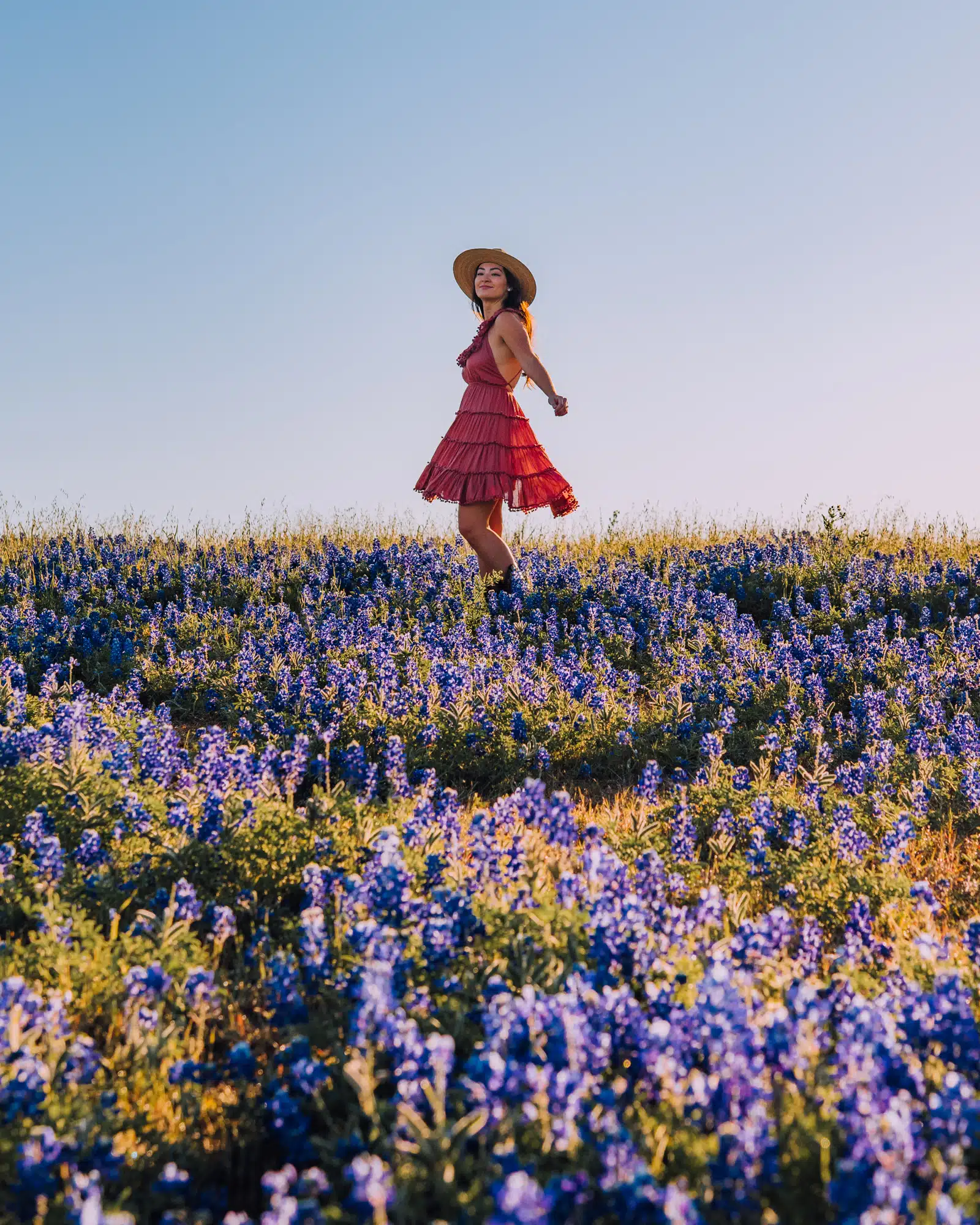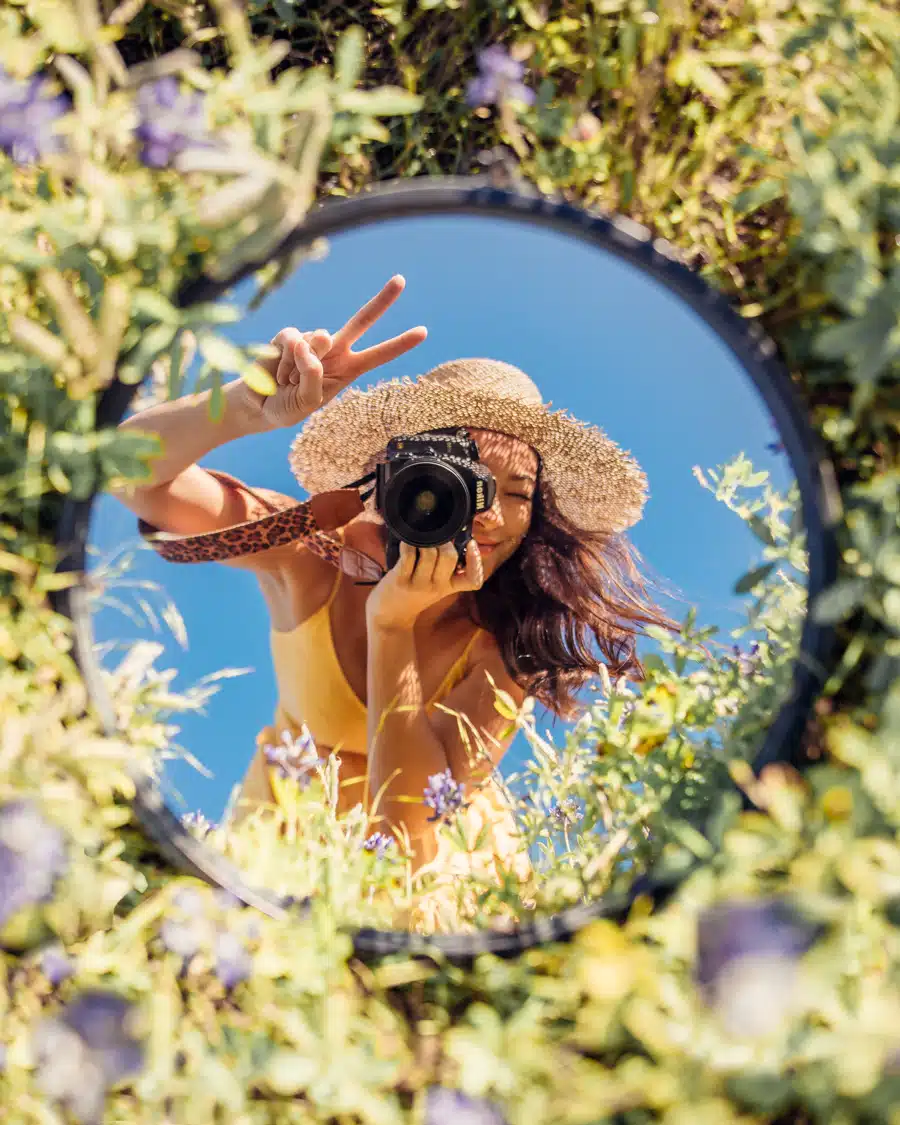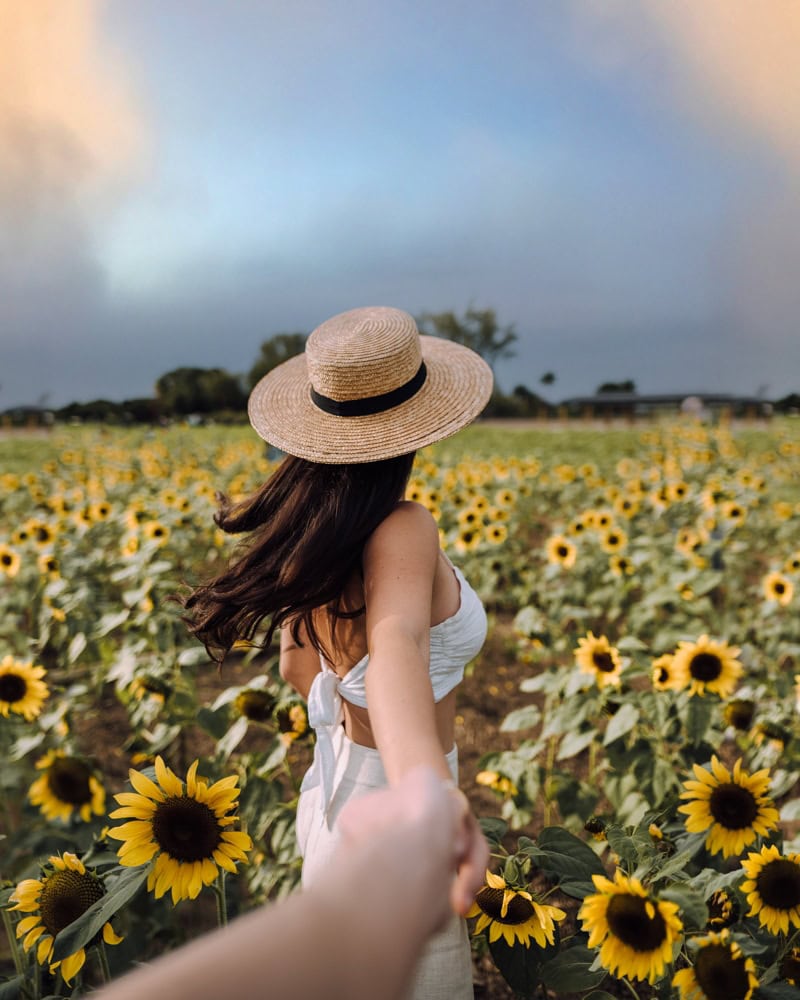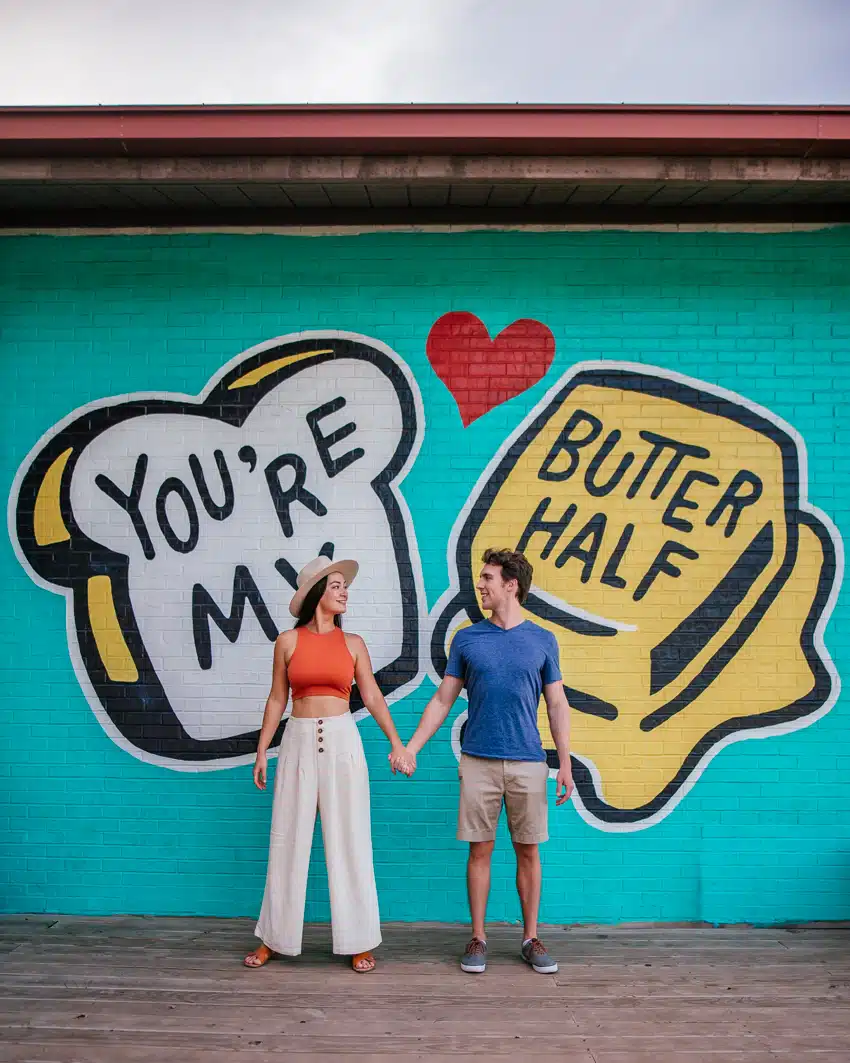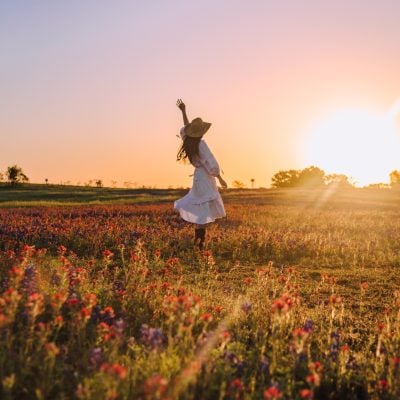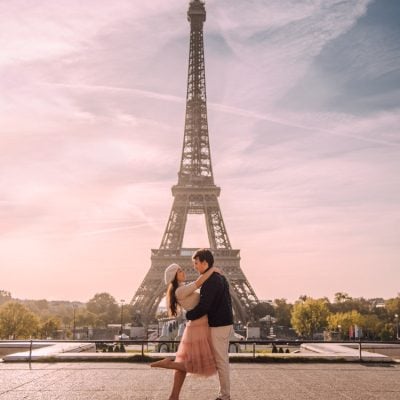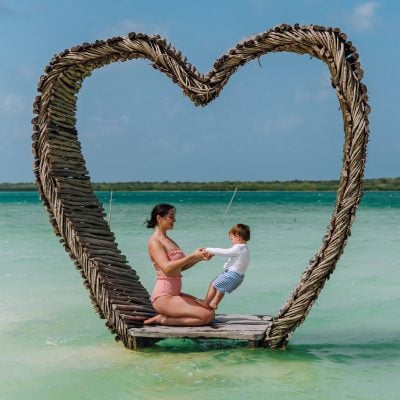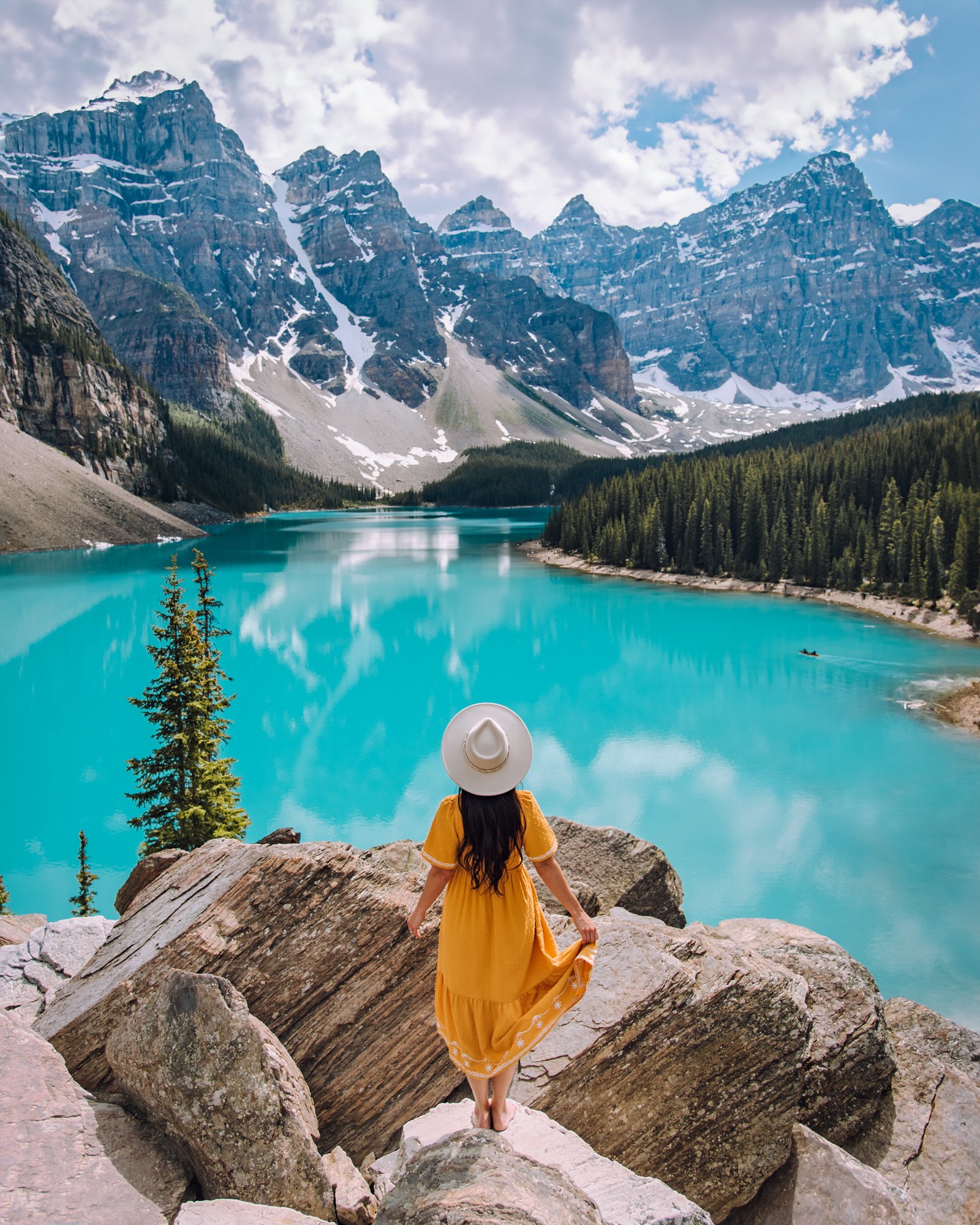
Banff is one of the most stunning destinations in Canada, and you can experience so much of its beauty in a three-day Banff itinerary. That’s what we did, and we absolutely loved our experience!
When we visited in early June, we explored Banff with my parents and our 1-year-old son. We stayed in Banff for three nights and departed late on the fourth day, giving us basically three full days in Banff.
It was and remains to this day one of the most beautiful places I’ve ever visited! Whether you’re looking for adventure or relaxation, Banff has something for everyone.
In this article, I’ll share my recommended itinerary for a three-day trip to Banff, including the best places to stay, eat, and explore.
You’ll discover the majestic mountains, beautiful lakes, and charming towns that make Banff so special!
Whether you want to explore the natural beauty of the mountains, lakes, and glaciers or indulge in some outdoor adventures, you can find it all in this three-day Banff itinerary.
Before we jump into my Banff itinerary, let’s dig a bit further into Banff in case you haven’t been before or are unfamiliar with this part of Canada!
What is Banff famous for?

Banff is a stunning town in the heart of the Canadian Rockies, where you can enjoy breathtaking views, amazing wildlife, and relaxing hot springs. Banff is famous for being Canada’s first national park, a UNESCO World Heritage Site, and a paradise for outdoor enthusiasts.
Whether you want to ski on world-class slopes, hike on scenic trails, paddle on turquoise lakes, or soak in mineral-rich waters, Banff has something for everyone. Beautiful turquoise lakes- especially Lake Louise (pictured above) and Moraine Lake (the first photo in this post)- have put Banff on the map globally.
The town of Banff is also a charming place to explore, with historic buildings, cozy restaurants, and friendly locals.
When is the best time to visit Banff?

Banff is a beautiful destination with stunning scenery and outdoor activities all year round.
There is no bad time to visit Banff, but depending on your preferences, you may enjoy some seasons more than others.
Here is a brief overview of what Banff is like in each season:
Spring (March to May)
Spring is a transitional season in Banff, where you can still enjoy winter sports like skiing and snowshoeing but also witness the melting of the snow and the emergence of wildflowers and wildlife. The weather can be unpredictable, so be prepared for both cold and warm days. Spring is also a great time to avoid the crowds and find lower prices on accommodation and tours.
Summer (June to August)
Summer is peak season in Banff, where you can experience the warmest and sunniest days- but also the most crowds and highest prices. It’s ideal for hiking, biking, camping, canoeing, rafting, and other outdoor adventures. You can also explore iconic attractions like Lake Louise, Moraine Lake, and the Banff Gondola. Be sure to book your accommodation and activities in advance, as they can sell out quickly.
Fall (September to November)
Fall is another transitional season in Banff, where you can enjoy the changing colors of the leaves and the crisp fall air. Autumn is perfect for hiking, biking, fishing, and wildlife watching, as you can see bears, elk, deer, and other animals preparing for winter. The weather can vary from mild to chilly, so pack layers and a warm jacket. Fall is also a quieter and cheaper time to visit Banff, as the summer crowds have left.
Winter (December to February)
As expected, winter is the coldest and snowiest season in Banff, where you can experience a true winter wonderland. Winter is ideal for skiing, snowboarding, ice skating, sleigh rides, dog sledding, and other snow activities. You can also relax in the hot springs, visit the ice sculptures at Lake Louise, or join the festivities at the Banff SnowDays Festival. Winter is also a busy and expensive time to visit Banff, especially during the holidays and weekends.
The Banff National Park Pass

When visiting Banff National Park, you will need to purchase a park pass to enter and enjoy the park.
You can buy a daily pass or a discovery pass, depending on how long you want to stay and how many parks you want to visit.
A daily pass is valid until 4:00 p.m. the following day and costs $10.50 for an adult, $9.00 for a senior, free for a youth, and $21.00 for a family or group up to 7 people. (And, no, you don’t need a new daily pass each day. When you purchase, you can buy one pass for the length of your entire stay.)
This pass also allows entry into the surrounding mountain national parks, including Yoho National Park, which you’ll visit on this 3-day Banff itinerary.
You can buy your park pass online or at various locations in and around Banff. We purchased ours at the park’s entrance on the road from Calgary.
Tip: If you’re exploring national parks in Canada for more than a week, it’s cheaper to buy a discovery pass. A discovery pass is valid for a full year and gives you access to more than 100 national parks, marine conservation areas, and historic sites across Canada. It costs $72.25 for an adult, $61.75 for a senior, free for a youth, and $145.25 for a family or group. (See current pricing here.)
Where should you stay in Banff?

If you’re looking for a place to stay in Banff, you have plenty of options to suit your preferences and budget.
There are three main areas where you can choose as your home base: Banff, Lake Louise, and Canmore.
Banff
Banff is a beautiful town surrounded by the stunning scenery of Banff National Park, and it’s a great base to explore Lake Louise and Canmore. Lake Louise is about 40 minutes northwest, and Canmore is about 20 minutes southeast.
One of the most iconic places to stay in Banff is the Fairmont Banff Springs, a historic castle-like hotel that offers luxury, elegance, and charm. You can enjoy the views of the mountains, the golf course, the spa, and the fine dining options at this hotel. It’s also close to Bow Falls, Cascade of Time Garden, and Banff Upper Hot Springs.
If you’re looking for something more affordable, you can check out some of the hotels and inns in Banff town area, such as Banff Caribou Lodge & Spa, Banff Aspen Lodge, or Banff Inn. These properties offer comfortable rooms, friendly service, and convenient locations near shops, restaurants, and trails. After a day of exploring, you can also relax in the hot tubs, saunas, or fireplaces.
We found a great, affordable option in Tunnel Mountain Resort and found their cabin-style stay perfect for sharing with my parents and our son. It was just a short drive from Banff, which we chose as our home base to really experience this town.
For a more cozy and personal experience, you can also stay at one of the many bed and breakfasts in Banff, such as Banff Boutique Inn, which offers homey rooms, delicious breakfasts, and warm hospitality.
No matter where you choose to stay in Banff, you’ll be amazed by this place’s natural beauty and cultural diversity. You’ll also have easy access to Lake Louise and Canmore, two other destinations worth visiting.
Lake Louise
Lake Louise is both the name of the stunning glacial lake that offers scenic views and the name of the town that houses it. It’s much further north than Banff or Canmore and much more secluded. You won’t find a whole lot of restaurant options here. However, the biggest perk is that it gives you a shorter drive to famous spots like Lake Louise (duh), Moraine Lake, Yoho National Park, the Icefields Parkway, and more.
At Lake Louise, the most famous choice is the Fairmont Chateau Lake Louise, a majestic hotel on the shores of one of the most beautiful lakes in the world. You can admire the turquoise water, the glaciers, and the peaks from your room or take advantage of outdoor activities like hiking, skiing, canoeing, and ice skating. The hotel also has a spa, a fitness center, and several restaurants and bars.
For more affordable options in Lake Louise, you can stay at Deer Lodge or Lake Louise Inn for a convenient location near the lake.
Canmore
Canmore is a charming town that offers a more laid-back vibe and a variety of attractions like museums, art galleries, breweries, and festivals. Staying in Canmore is a great way to find cheaper rates than Banff or Lake Louise, and it’s just a bit further away from all of these Banff attractions. You’ll drive about 20 minutes to Banff and about 50 minutes to Lake Louise.
Canmore also has a ton of different restaurant options.
You can stay at Blackstone Mountain Lodge or The Malcolm Hotel for comfortable and modern accommodation.
What is the best way to get around Banff?

The easiest way to get around Banff is by renting a car. We flew into Calgary International Airport (which is an awesome airport, by the way! It’s the most kid/toddler-friendly airport I’ve ever been to!). From there, Banff is about an hour and a half away.
Tip: While I usually book a rental car separately from my flight, when we flew WestJet, it was way cheaper to rent a car through them! So keep an eye on this if you’re doing the same thing!
While a car is the easiest way to see Banff and the surrounding areas, you’ll find that it’s actually not necessary if you don’t want to drive.
While we did our Banff itinerary with a rental car, you can definitely customize it to work with public transportation.
Public Transportation
One of the best ways to get around in Banff is to use the public transit system, which is reliable, affordable, and eco-friendly. You can hop on and off the buses that run throughout the town and to popular sites like Lake Louise, Johnston Canyon, and the Banff Gondola.
You can also rent a bike or an e-bike and explore the scenic trails and paths connecting Banff with nearby towns like Canmore and Lake Minnewanka.
If you are feeling adventurous, you can also join a guided tour or a shuttle service that will take you to some of the most spectacular places in the Canadian Rockies. Whatever you choose, you will have a wonderful time discovering Banff’s natural beauty and charm.
3-Day Banff Itinerary Map
Here is a Google map of all of the various spots you’ll visit on this 3-day Banff itinerary.
I recommend downloading Google offline maps so that you can still navigate throughout the park, even with very spotty cell coverage.
You can save this Google Map so that you can reference it while on your trip.
Alright, now what you came here for… the ultimate three-day Banff itinerary!
3-Day Banff Itinerary

I’ve included everything we did (including all of the absolute musts while in Banff) and some tips for other things you could do in the area!
You could spread this out over more days if you’re looking for a four or five-day Banff itinerary- or even a week-long Banff itinerary! And, of course, feel free to eliminate items if you’re visiting over the weekend and want a two-day Banff itinerary.
Let’s get to it! Here’s my Banff itinerary for you!
Banff Itinerary: Day 1
On day 1 of this 3-day Banff itinerary, you’ll get to see Banff National Park’s most stunning lakes! Then, you’ll pop into Yoho National Park to see its most majestic lake and natural wonders as well!
Lake Louise

If you want a stunning, iconic destination to explore nature and enjoy outdoor activities, visit Lake Louise in Banff National Park. It is famous for its glacial lake surrounded by majestic mountains, lush forests, and a historic castle-like hotel.
Lake Louise is a great spot to experience the beauty and adventure of the Canadian Rockies in any season. It is a true year-round destination, with different activities and attractions depending on the season.
Wintertime calls for winter activities; you can ski, snowshoe, ice skate, or take a sleigh ride on the frozen lake. In summer, you can canoe, kayak, fish, or swim in the lake (if you don’t mind the cold water). The fall brings the changing colors of the foliage and the larch trees. In spring, you can see the lake thaw and the wildflowers bloom.
Hiking Trails in Lake Louise
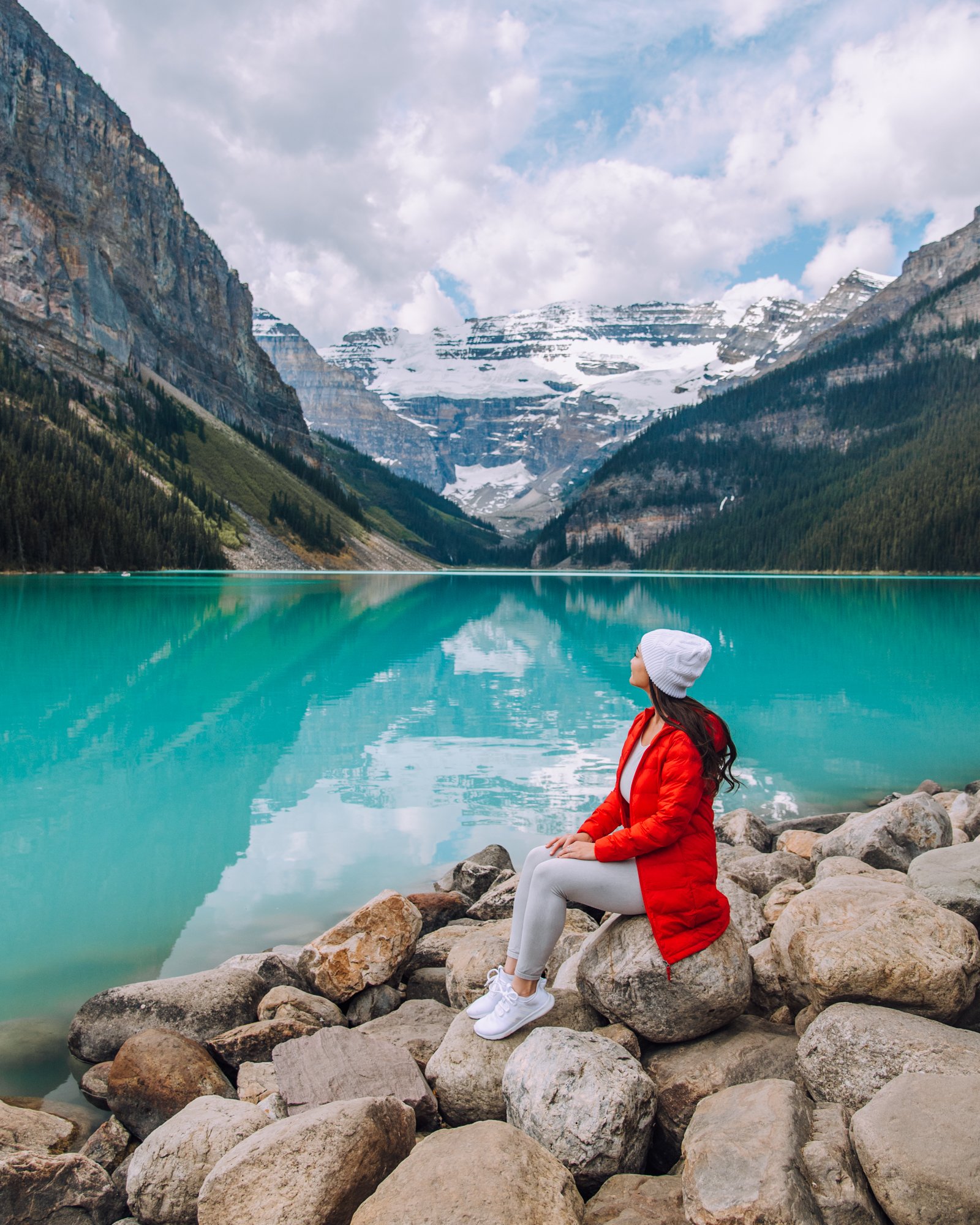

Some of the most popular hiking trails are the Lake Agnes Tea House Trail (2.1 miles or 3.5 km one way, 400m elevation gain), the Plain of Six Glaciers Trail (4.5 miles or 7.3 km one way, 514 m elevation gain), and the Big Beehive Trail (3.2 miles or 5.2 km one way, 564 m elevation gain). These trails offer spectacular views of the lake, the glaciers, and the surrounding peaks.
The walk around the lake shore is an easy and scenic option, suitable for all ages and abilities. It is about 1.2 miles (2 km) long and takes about 40 minutes to complete. You can enjoy the reflection of the mountains on the water, watch the canoes glide by, and admire the historic Fairmont Chateau Lake Louise.
And don’t forget that you can rent a canoe, too! It’s a pricey endeavor, but definitely a once-in-a-lifetime experience!
How to Get to Lake Louise

Though you can park right at Lake Louise, you may find parking difficult, especially during peak times. For the best shot at a parking spot, head there early in the morning!
I will say that when we visited in early June, we were able to get a parking spot, even though it was 10am. However, the later you go in the summer, the busier Banff gets, so keep that in mind!
For a guaranteed way to see the lake, take a shuttle bus from the Park and Ride, located at the Lake Louise Ski Resort. You need to book your shuttle ticket online in advance, as parking is very limited, and the road to Moraine Lake is closed to personal vehicles.
I’ll talk more about the Park and Ride option in just a bit. You can also take Roam Public Transit from the town of Banff.
Moraine Lake

One of the most breathtaking places I have ever visited is Moraine Lake in Banff National Park, Canada.
This glacially-fed lake is famous for its brilliant turquoise color and its stunning backdrop of the Valley of the Ten Peaks. Surrounded by majestic mountains and pine forests, I felt like I was in a fairy tale as I explored the shoreline and hiked the nearby trails.
Don’t forget to bring your camera and capture the breathtaking views of the lake and the mountains! (You can see exactly what’s in my camera bag here!)
Hiking Trails in Moraine Lake


You can enjoy the views from the Rockpile Trail, a relatively short and easy hike. I highly recommend it as it gives you incredible views of the lake. From above, the lake also appears even bluer than it does from ground level!
Or you can explore some other amazing trails that start from Moraine Lake, such as the Consolation Lakes Trail, the Eiffel Lake Trail, or the Sentinel Pass Trail.
These trails vary in length and difficulty, but they all offer incredible scenery and opportunities to see wildlife.
How to Get to Moraine Lake

Moraine Lake is about 9 miles (14 km) from Lake Louise, and you can get there by taking a Parks Canada shuttle, Roam Public Transit, a commercial bus tour, or hiking/biking there. They no longer allow you to park a car on your own, so these are your only options! Plan ahead and book your shuttle ticket in advance; I’ll cover more on the Park & Ride Shuttle in the next section of this Banff itinerary.
All in all, Moraine Lake is a must-see destination on your Banff itinerary. It’s truly breathtaking and a memorable experience for anyone who loves nature and adventure. I’m not being dramatic when I say it’s a Canadian paradise!
Park and Ride – Lake Louise and Moraine Lake Shuttle

If you’re looking for a hassle-free way to visit one of the most stunning lakes in the world, look no further than the Park & Ride shuttle service to Moraine Lake in Banff. This convenient and affordable option is one of the best ways to see Moraine Lake, where driving yourself is not an option.
You’ll board a comfortable and spacious shuttle bus at the Lake Louise Park & Ride lot, located just off Highway 1, and travel along the scenic Moraine Lake Road to your destination.
Once you arrive, you’ll have plenty of time to explore the turquoise waters, towering peaks, and hiking trails of Moraine Lake. When you’re ready to head back, you will join the bus line at Moraine Lake to hop on the next return shuttle. (When we departed for Moraine Lake, there was no wait at all, but the line to return ended up being around a 40-minute wait.)
Book your tickets online here!
Tip: If you see that the online shuttle is fully booked and you are willing to take time out of your day, you can go to the Park and Ride and inquire about walk-up tickets. We saw people in line to buy tickets when we got there with our online passes, and I was under the impression that tickets were sold out. So it may be an option for you!
Emerald Lake

At this point in my 3-day Banff Itinerary, I recommend driving the pretty short drive to Yoho National Park to see the gorgeous Emerald Lake.
Note: Even though you’ll be entering a new national park, your Banff National Park Pass covers entry to Yoho National Park as well.
Emerald Lake is a gorgeous glacial lake that sparkles with a turquoise hue, surrounded by majestic peaks and lush forests. It’s the largest of the park’s 61 lakes and ponds, and it owes its brilliant color to the fine glacial sediment that reflects the light.
Some of the most popular things to do at Emerald Lake are to enjoy a scenic hike around the lake or rent a canoe and paddle on the turquoise water.
Emerald Lake is also a great spot for wildlife viewing, as you might see moose, elk, deer, bears, and many birds.
Hiking Trails by Emerald Lake


One of the best ways to explore Emerald Lake is by hiking along its scenic trails. There are several options to choose from, depending on your fitness level, time, and interests. Here are some of the most popular Emerald Lake hikes:
- Emerald Lake Loop: This is an easy and flat hike around the lake shoreline, offering amazing views of the water and mountains. It’s suitable for families and wheelchair users, as part of the trail is paved. The loop is roughly 3 miles (5.1 km) long and takes about 2 hours to complete.
- Emerald Lake Trail / Emerald Basin: This hike is similar to the loop trail but detours up the Emerald Basin, where the lake’s water source originates from glaciers high above. You’ll hike through forests and avalanche chutes and see a waterfall and a rock amphitheater. The trail is moderate and steep in some sections, and it’s 6.2 miles (10 km) long and takes about 3 hours to complete.
- Emerald Triangle: This is a jaw-dropping hike that climbs to Yoho Pass, where you’ll have panoramic views of Emerald Lake, Yoho Valley, and Takakkaw Falls. You’ll also pass by two other beautiful lakes: Yoho Lake and Wapta Lake. The trail is challenging and requires some scrambling, and it’s 12 miles long (19.5 km) and takes about 7 hours to complete.
How to Get to Emerald Lake

To get to Emerald Lake, you’ll need to drive along a quiet 2-lane paved road about 9 miles (15 km) long that connects the busy Trans-Canada Highway with the lake.
The exit is well-marked, and there’s a large parking lot at the end of the road. You can also take a shuttle bus from nearby towns like Field or Lake Louise.
To sum it all up, Yoho National Park is a great detour from Banff National Park, and you’ll love Emerald Lake’s natural beauty and tranquility. Whether you want to hike, canoe, ski, or just relax, it’s a great place to add to a 3-day Banff itinerary!
Natural Bridge

On your way back from Emerald Lake, you’ll want to stop at this Canadian natural wonder in Yoho National Park. Natural Bridge is a rock formation that spans the Kicking Horse River, creating a stunning arch that looks like a bridge.
The river has carved out a deep gorge over thousands of years, creating a hole in the limestone behind what was once a more standard waterfall. The result is a spectacular sight that attracts thousands of visitors every year. The river is a beautiful turquoise color and flows with great force through the narrow opening.


Budget 30 minutes for this spot, though you can easily spend more or less time here, depending on your interest level. You simply park and walk right up to the various viewing platforms here.
You can admire the Natural Bridge from these viewpoints or even walk across it if you are feeling adventurous!
Now that you’ve explored Lake Louise, Moraine Lake, and parts of Yoho National Park, it’s time to head back to your lodging. You can explore the town of Banff if you have extra time.
Banff Itinerary: Day 2
On day 2 of this 3-day Banff itinerary, you’ll head northwest to the Icefields Parkway and explore Johnston Canyon on your way back south.
Columbia Icefield Tour

If you’re looking for an amazing adventure in the Canadian Rockies, you should definitely check out the Columbia Icefield tour. It’s about 2 hours away from Banff, but it’s an incredibly scenic drive that is well worth it, in my opinion!
Once you reach the Columbia Icefield visitor’s center, allow around 3 hours for this experience.
The trip’s highlight is the Athabasca Glacier, a massive sheet of ice covering an area of 2.3 mi² (6 km²) and is 984 ft (300 m) thick.
The Athabasca Glacier is one of the most accessible glaciers in the world, where you can ride on a specially designed Ice Explorer vehicle and walk on the ice.

Trust me, you will be awed by the beauty and power of nature! Our tour guide told us to take a sip of the glacier water, and it was insanely refreshing!


Glacier Skywalk
On the Columbia Icefield Tour, you’ll also get to experience the Glacier Skywalk, a glass-floored observation platform that offers stunning views of the Sunwapta Valley and the surrounding mountains.
While your time on the glacier is limited (I believe it was about 30 minutes!), you can stay at the Skywalk as long as you want.


The cost of the tour varies depending on the season and availability, but you can expect to pay around $109 CAD per adult (ages 13+) and $70.85 CAD per child (ages 6-12). Children under 5 are free. You can book your tickets online here.
Note: If you prefer a Columbia Icefield tour that departs from Banff, this full-day tour also includes stops at scenic locations along the Icefields Parkway, such as Bow Lake. You’ll learn about the natural history and geology of the area from your friendly and knowledgeable guide and enjoy a delicious picnic lunch along the way. The Columbia Icefields tour from Banff is a full-day excursion that lasts about 11 hours.
Icefields Parkway

At the Columbia Icefield and have time to see more in the area? One of the most amazing experiences you can have in Canada is visiting the Icefields Parkway in Banff.
This scenic route stretches for 144 miles (232 km) and offers stunning views of glaciers, mountains, lakes, and waterfalls.


You can stop at beautiful attractions along the way, such as the aforementioned Columbia Icefield and Athabasca Glacier, Peyto Lake, and Bow Lake. You can also enjoy hiking, biking, wildlife watching, and camping in this natural wonderland.
Bow Valley Parkway

On your way back to Banff, instead of taking the Trans-Canada Highway the whole way, veer off and drive down the Bow Valley Parkway. It runs parallel to the main highway for about 31 miles (51 km) and offers a more relaxed and intimate experience of the Canadian Rockies.
It’s an incredibly scenic drive that only adds an extra 20 minutes to your route. Along the way, you’ll see stunning views of mountains (like Castle Mountain pictured below), forests, rivers, and lakes.

Keep your eyes peeled for wildlife- you might spot elk, deer, bears, wolves, coyotes, moose, and more. (We saw a black bear on our drive!)
You’ll also find plenty of hiking trails, picnic areas, historic sites, and attractions to explore. Some of the highlights include Johnston Canyon, Castle Mountain, Baker Creek, and Morant’s Curve.

Be sure to stop at Morant’s Curve for the incredible view of the Bow River that you see above. And next on this Banff Itinerary, we’ll hit up Johnston Canyon, also on the Bow Valley Parkway!
Johnston Canyon

On your way from the Columbia Icefields back to Banff, Johnston Canyon is the perfect detour. It is one of the most popular hiking trails in the Canadian Rockies, and for good reason. You will be amazed by the stunning views of turquoise waterfalls, limestone cliffs, and lush forest.
The trail is well-maintained and suitable for all skill levels. It’s relatively stroller-friendly, too. We pushed James around in his stroller and only had a few instances where we had to lift his stroller up over tree roots/rocks.


You can choose to hike to the Lower Falls, which are only half a mile (1.1 km) from the parking lot. Don’t miss the tunnel entrance to the Lower Falls- it’ll get you right up close to the falls (but be prepared to get very wet if you enter).
From the Lower Falls, you can continue an additional .81 miles (1.3 km) to reach the Upper Falls. We turned back because James was getting fussy, but my dad continued to the Upper Falls and got these photos of the journey:


If you are feeling more adventurous, you can also hike to the Ink Pots, which are seven colorful pools of mineral water located 1.8 miles (3 km) beyond the Upper Falls. No matter how far you go, Johnston Canyon is a really neat experience. I highly recommend adding it to your 3-day Banff itinerary!
Banff Itinerary: Day 3
On the last day of this 3-day Banff itinerary, you’ll stay right around Banff. You’ll get to explore some beautiful lakes and experience more of the Banff townsite.
Lake Minnewanka

Lake Minnewanka means “Water of the Spirits” in Nakoda, the language of the indigenous people who lived in the area for thousands of years. They believed that spirits inhabited the lake and, as such, respected its power and beauty.
Lake Minnewanka is 13 miles (21 km) long and 466 ft (142 m) deep and is a glacial lake formed by the melting of ice sheets during the last ice age. The Cascade River and several streams feed the lake.
This stunning lake is the largest in the park and offers many activities for all seasons. You can enjoy a boat cruise, a hike, a bike ride, a picnic, or even a scuba dive in the summer.
In fact, Lake Minnewanka is a fascinating place for diving enthusiasts.
The lake has a submerged resort town called Minnewanka Landing, which was flooded in 1941 when a dam was built to increase the lake’s water level! You can see the remains of buildings, bridges, wharves, and artifacts under the water.
The lake also has a unique thermocline that creates different layers of water temperature and visibility.
Lake Minnewanka is also a great place to spot wildlife, such as elk, deer, bighorn sheep, and bears.
Hiking Trails in Lake Minnewanka


Lake Minnewanka also has several trails for hiking and biking of various lengths and difficulties. The most popular trail is the Lakeshore Trail, which follows the shoreline for 9.7 miles (15.6 km) one way. It is an easy walk with minimal elevation gain and stunning views of the lake and mountains.
You can also hike to Stewart Canyon, Aylmer Lookout, or Aylmer Pass for more challenging options. Just watch out for bears!
In the winter, you can marvel at the frozen lake and try ice skating, snowshoeing, or cross-country skiing.
How to Get to Lake Minnewanka

Lake Minnewanka is only a 10-minute drive from the town of Banff, and it is easily accessible by car, bus, or bike.
There are two large parking lots: one for regular cars and one for RVs and trailers. We had no trouble getting a parking spot here.
You can also take the Roam Route #6 bus from Banff throughout the summer season or cycle along the scenic Lake Minnewanka Loop.
Two Jack Lake
While visiting Lake Minnewanka, consider adding Two Jack Lake to your Banff itinerary. This beautiful lake is surrounded by majestic mountains and lush forests and offers many activities for visitors of all ages and interests.
You can enjoy swimming, kayaking, fishing, hiking, biking, or simply soaking in the views.
You can also camp at the lakefront or stay at one of the nearby lodges or hotels.
Though we didn’t have time for Two Jack Lake, I wanted to add it so that you know it’s an option while in this area!
Johnson Lake
Here’s one more lake in this area that you can consider visiting if you have extra time. Johnson Lake in Banff is a beautiful lake and popular swimming spot, as it’s one of the warmest lakes in the Rockies because it’s not glacier-fed!
Stunning mountain views surround Johnson Lake. It offers a variety of activities for all ages and skill levels; you can enjoy swimming, kayaking, fishing, hiking, biking, or just relaxing on the shore.
Johnson Lake is also a great spot for wildlife watching, as you might see elk, deer, bears, or even moose.
Johnson Lake is easily accessible by car or bus from Banff, and picnic tables, washrooms, and parking facilities are available.
Banff

It’s about time I included the town of Banff in this Banff itinerary! Banff offers a variety of activities for all seasons, such as hiking, skiing, wildlife watching, and hot springs.
Fun fact: the Banff townsite is the highest town in Canada, with an elevation of 4,537 feet (1,383 meters)!
Here are the top things to do in Banff that you can choose from!
Note: I’ve made Banff its own section highlighting different Banff activities. If you have made Banff or Canmore your home base, you can sprinkle these throughout your time in Banff National Park if you find yourself with extra time each day.
Or, if you’re following this Banff itinerary closely, you can dedicate an afternoon to Banff and knock out your favorite things on this list!
Walk Around the Banff Townsite

The Banff townsite is so charming and filled with some great shops and restaurants.
Whether you need some outdoor gear, souvenirs, clothing, art, or books, you will find something to suit your taste and budget!
Here are some of the best shops to visit in the Banff townsite:
- Banff Springs Hotel Gift Shop: This is not your typical hotel gift shop. Here you can browse through a selection of fine jewelry, clothing, accessories, and local crafts. You can also find some unique items related to the history and heritage of the hotel and Banff National Park.
- Mountain Galleries: If you are looking for some beautiful art to take home, you should check out this gallery that features works by Canadian artists. You will find paintings, sculptures, pottery, glassware, and more in a variety of styles and themes.
- Banff Book & Art Den: This cozy bookstore offers a wide range of books on topics such as history, nature, travel, fiction, and more. You can also find some local art, maps, postcards, and magazines. It’s a great place to relax and enjoy a good read.
- Rocky Mountain Soap Company: This is a must-visit for anyone who loves natural and organic products. You can choose from a variety of handmade soaps, lotions, bath salts, candles, and more that are made with ingredients from the Rocky Mountains.
Mount Norquay Lookout
If you’re looking for a scenic spot to enjoy the beauty of Banff National Park, you should check out the Mount Norquay Lookout.
It’s a short and easy walk from the top of the Mt Norquay Sightseeing Chairlift, which takes you up to 7,000 feet above sea level in just 8 minutes.
From the lookout, you can admire the stunning views of the Bow Valley, the Canadian Rockies, and the town of Banff. You can also see the famous Mount Rundle, which is one of the most photographed mountains in Canada.
The Mount Norquay Lookout is a great place to take some amazing photos, relax, and breathe in the fresh mountain air.
You can also grab a bite or a drink at the Cliffhouse Bistro, which is located near the chairlift terminal.
The Mount Norquay Lookout is open from June to October, and tickets for the chairlift start at $43 CAD for adults (16+) and $27 CAD for kids (6-15).
You can also take a free shuttle bus from Banff town to Mount Norquay, which runs several times a day.
Banff Gondola
If you’re looking for an amazing mountaintop experience in Banff, you should definitely check out the Banff Gondola. The Banff Gondola is a cable car that takes you to the summit of Sulphur Mountain, where you can enjoy an amazing birdseye view of the national park and stunning views of the town, Bow Valley, and the Canadian Rockies.
The gondola ride is about 8 minutes long in each direction and costs $60 CAD for adults and $92 CAD for children (ages 6-15). Kids 5 and under ride free anytime, and kids go free for the first two hours of the day with the Family Experience.
The Banff Gondola is located at the end of Mountain Avenue, about a 5-minute walk from downtown Banff. You can also take a free shuttle bus from various locations in town.
The gondola operates daily from 10 a.m. to 10 p.m. (last ride up at 7:30 or 8:30 p.m., season-dependent), and it is closed for annual maintenance from November 6th to 17th.
Once you reach the top, you can explore the world-class mountaintop discovery center, which features an interpretive center, a theater, a rooftop deck, and a boardwalk to the Cosmic Ray Station and Sanson Peak.
You can also dine at the award-winning Sky Bistro or grab a snack at Northern Lights. There are often live music, events, and special programs to enhance your experience.
Don’t forget your camera and dress warmly, as it can get chilly at the summit!
Banff Upper Hot Springs
Banff Upper Hot Springs are Canada’s highest-elevation operational hot springs, at 5,200 ft (1,585 m) above sea level.
You can enjoy the outdoor hot pool with a stunning view of the mountains while soaking in the mineral-rich water that has attracted visitors since 1886.
The hot springs are open daily from 10 a.m. to 10 p.m., and the entry fee is $16.50 CAD for adults, $14.25 CAD for seniors and youths, and free for children under 3.
Other than relaxing, you can also learn more about the history and geology of the hot springs at the interpretive exhibits and the Wonder of Water hydrology exhibit. You can also rent a historic swimsuit from the 1920s for a fun photo opportunity!
Don’t forget to bring your own towel or rent one for $2.00 CAD.
How to Get to Banff Upper Hot Springs
The Banff Upper Hot Springs are located near the top of Sulphur Mountain, 2.5 miles (4 km) south of the town of Banff. You can get there by car, following the signs on Mountain Avenue, or by taking the Roam transit route 1, “Sulphur Mountain,” from downtown Banff.
The transit buses run every 20 minutes during the regular hours of operation, and parking at the site is limited and fills quickly.
The walk from the parking lot to the hot springs is about 10 minutes, depending on your pace. The distance is about 500 meters, and the path is paved and well-maintained. The walk is not very steep or difficult, but you may feel some effects of the altitude if you are not used to it!
Legacy Trail
If you’re looking for a fun and scenic way to explore Banff National Park, you should try cycling the Banff Legacy Trail. This is a paved and multi-use trail that connects Banff and Canmore, two charming mountain towns in Alberta, Canada. You can enjoy stunning views of the Rockies, stop at picnic areas, and learn about the history and nature of the park from interpretive panels along the way.
The Banff Legacy Trail is 13.8 miles (22.3 km) long, but you can extend your ride to 16.6 miles (26.8 km) if you include the section outside the park gates that leads to the Travel Alberta Visitor Information Center in Canmore. This is also known as the Rocky Mountain Legacy Trail. The trail is mostly flat, but some gentle hills and curves keep things interesting. Depending on your speed and how often you stop, you can expect to spend 2-3 hours for a round-trip hike.
The trail is easy to access from both Banff and Canmore. You can start from the Bow Valley Parkway near the town of Banff or from the Travel Alberta Visitor Information Centre in Canmore. There are also several parking lots along the trail where you can leave your car and hop on your bike. You can find a map of the trail here!
The Banff Legacy Trail is a great way to experience the beauty and culture of Banff National Park in an environmentally friendly way. It’s suitable for all ages and abilities, and you can rent bikes from several shops in Banff or Canmore if you don’t have your own.
The trail is best enjoyed from mid-April to mid-October, weather permitting. So grab your helmet, water bottle, and camera, and prepare for an unforgettable ride!
Wildlife in Banff

Before I wrap up this Banff itinerary, I’d be remiss if I didn’t include a section on the kinds of wildlife you could see here!
Simply put, Banff National Park is a paradise for wildlife lovers! You can see amazing animals in every season, from black bears and grizzly bears to elk and moose.
On our June trip to Banff, the coolest animals we saw (IMO) were a black bear and a coyote.
We saw a black bear right up close as we were driving from Yoho National Park to Johnston Canyon. He took his time eating along the side of the road and was totally unfazed by our presence.
We also saw what I believe is a coyote (pictured below) as we were leaving the town of Lake Louise. We were surprised to see this guy so close to a (relatively more) urban area!


Wildlife in Each Season
Here are some tips on what wildlife you can see in Banff National Park in each season of the year:
- Spring: This is the best time to see baby animals, such as bear cubs, elk calves, and deer fawns. They are often found near their mothers in grassy areas along the roads or trails. You might also spot some bighorn sheep and mountain goats on the rocky slopes.
- Summer: Summer is a fantastic time to spot wildlife like bears. If you’re in more remote areas, you may spot some of Banff’s more elusive inhabitants, such as wolves, cougars, and lynx. You can also see many birds, such as bald eagles, ospreys, and hummingbirds. And don’t forget to look for beavers, otters, and muskrats in the rivers and lakes.
- Fall: Fall is elk-rutting season, when you can hear the bugling of the bulls and witness their fights for dominance. You can also see some bears fattening up for hibernation by eating berries and other plants. And if you’re lucky, you might catch a glimpse of a wolverine or a marten in the forest.
- Winter: This is the time when many animals are hibernating or less active, but you can still see some wildlife in Banff National Park. You can see snowshoe hares, red squirrels, and chickadees in the trees. You can also see some large mammals, such as moose, caribou, and bison, in the lower valleys.
All in all, Banff National Park is a wonderful place to experience nature and wildlife. Remember to respect the animals and keep a safe distance from them!
In conclusion…

Banff is a stunning destination that offers something for everyone. I hope this Banff itinerary makes your trip incredibly beautiful and memorable.
You’ll be amazed by how much you can see and do in such a short time, and you’ll leave with unforgettable memories and a desire to return.
Banff is more than just a place; it’s a Canadian paradise where you will make the most incredible memories. Don’t miss this chance to experience it for yourself!
Safe travels,
Jasmine
